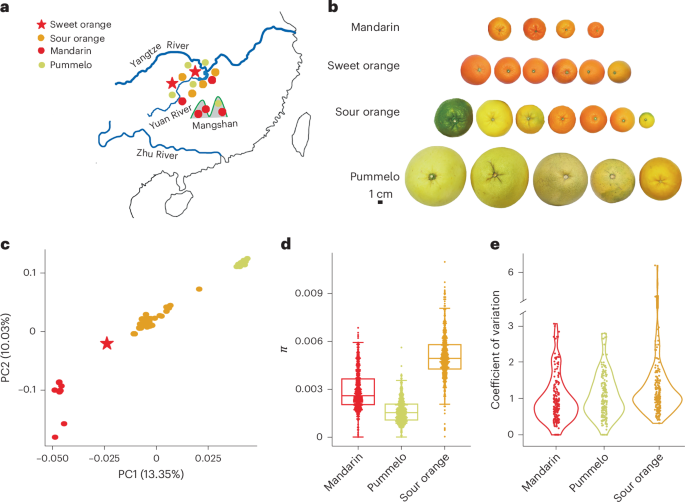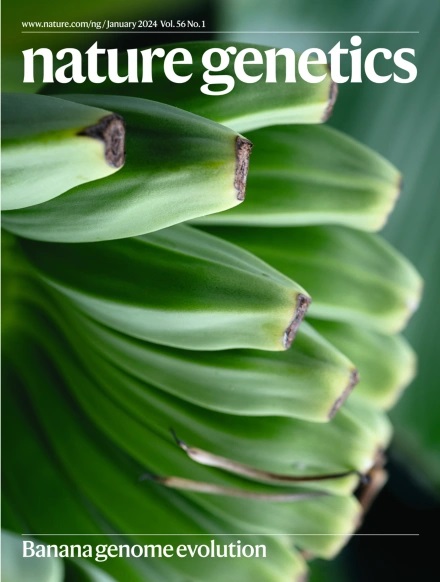Origin and de novo domestication of sweet orange
IF 31.7
1区 生物学
Q1 GENETICS & HEREDITY
引用次数: 0
Abstract
Sweet orange is cultivated worldwide but suffers from various devastating diseases because of its monogenetic background. The elucidation of the origin of a crop facilitates the domestication of new crops that may better cope with new challenges. Here we collected and sequenced 226 citrus accessions and assembled telomere-to-telomere phased diploid genomes of sweet orange and sour orange. On the basis of a high-resolution haplotype-resolved genome analysis, we inferred that sweet orange originated from a sour orange × mandarin cross and confirmed this model using artificial hybridization experiments. We identified defense-related metabolites that potently inhibited the growth of multiple industrially important pathogenic bacteria. We introduced diversity to sweet orange, which showed wide segregation in fruit flavor and disease resistance and produced canker-resistant sweet orange by selecting defense-related metabolites. Our findings elucidate the origin of sweet orange and de novo domesticated disease-resistant sweet oranges, illuminating a strategy for the rapid domestication of perennial crops. Genomic analyses of Citrus species including haplotype-resolved genomes of Citrus sinensis and Citrus aurantium highlight the origin of sweet orange and provide a strategy for de novo domestication of perennial crops.


甜橙的起源和重新驯化
甜橙在世界各地都有种植,但由于其单基因背景而遭受各种毁灭性疾病。阐明一种作物的起源有助于驯化新的作物,从而更好地应对新的挑战。本研究收集了226份柑橘材料并对其进行了测序,并组装了甜橙和酸橙的端粒-端粒二倍体基因组。基于高分辨率的单倍型基因组分析,我们推测甜橙起源于酸橙与鳜鱼的杂交,并通过人工杂交实验证实了这一模型。我们发现了与防御相关的代谢物,这些代谢物可以有效地抑制多种工业上重要的致病菌的生长。在甜橙中引入多样性,在果实风味和抗病性方面表现出广泛的分离性,通过选择防御相关代谢物生产出抗溃疡病的甜橙。我们的研究结果阐明了甜橙和抗病甜橙的起源,阐明了多年生作物快速驯化的策略。
本文章由计算机程序翻译,如有差异,请以英文原文为准。
求助全文
约1分钟内获得全文
求助全文
来源期刊

Nature genetics
生物-遗传学
CiteScore
43.00
自引率
2.60%
发文量
241
审稿时长
3 months
期刊介绍:
Nature Genetics publishes the very highest quality research in genetics. It encompasses genetic and functional genomic studies on human and plant traits and on other model organisms. Current emphasis is on the genetic basis for common and complex diseases and on the functional mechanism, architecture and evolution of gene networks, studied by experimental perturbation.
Integrative genetic topics comprise, but are not limited to:
-Genes in the pathology of human disease
-Molecular analysis of simple and complex genetic traits
-Cancer genetics
-Agricultural genomics
-Developmental genetics
-Regulatory variation in gene expression
-Strategies and technologies for extracting function from genomic data
-Pharmacological genomics
-Genome evolution
 求助内容:
求助内容: 应助结果提醒方式:
应助结果提醒方式:


